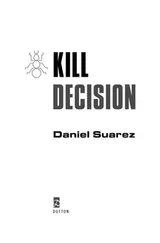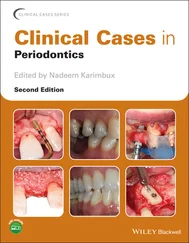59. Tonetti MS, Chapple IL, Jepsen S, Sanz M. Primary and secondary prevention of periodontal and peri-implant diseases: Introduction to, and objectives of the 11th European Workshop on Periodontology consensus conference. J Clin Periodontol 2015;42(suppl 16):S1–S4.
60. Holmstrup P, Plemons J, Meyle J. Non-plaque-induced gingival diseases. J Periodontol 2018;89(suppl 1):S28–S45.
61. Caton JG, Armitage G, Berglundh T, et al. A new classification scheme for periodontal and peri-implant diseases and conditions: Introduction and key changes from the 1999 classification. J Periodontol 2018;89(suppl 1):S1–S8.
62. Fine DH, Patil AG, Loos BG. Classification and diagnosis of aggressive periodontitis. J Periodontol 2018;89(suppl 1):S103–S119.
63. Kinane DF, Attström R, European Workshop in Periodontology group B. Advances in the pathogenesis of periodontitis. Group B consensus report of the fifth European Workshop in Periodontology. J Clin Periodontol 2005;32(suppl 6):130–131.
64. Listgarten MA, Schifter CC, Laster L. 3-year longitudinal study of the periodontal status of an adult population with gingivitis. J Clin Periodontol 1985;12:225–238.
65. Löe H, Anerud A, Boysen H, Smith M. The natural history of periodontal disease in man. The rate of periodontal destruction before 40 years of age. J Periodontol 1978;49:607–620.
66. Löe H, Anerud A, Boysen H, Morrison E. Natural history of periodontal disease in man. Rapid, moderate and no loss of attachment in Sri Lankan laborers 14 to 46 years of age. J Clin Periodontol 1986;13:431–445.
67. Needleman I, Garcia R, Gkranias N, et al. Mean annual attachment, bone level, and tooth loss: A systematic review. J Periodontol 2018;89(suppl 1):S120–S139.
68. Goodson JM, Tanner AC, Haffajee AD, Sornberger GC, Socransky SS. Patterns of progression and regression of advanced destructive periodontal disease. J Clin Periodontol 1982;9:472–481.
69. Socransky SS, Haffajee AD, Goodson JM, Lindhe J. New concepts of destructive periodontal disease. J Clin Periodontol 1984;11:21–32.
70. Jeffcoat MK, Reddy MS. Progression of probing attachment loss in adult periodontitis. J Periodontol 1991;62:185–189.
71. Gottlieb B. Weitere Beiträge zur Kenntnis des Alveolarschwundes und dessen Wiedergutmachung durch Zementwachstum. Z Stomatol 1923:195–201.
72. Armitage GC. Development of a classification system for periodontal diseases and conditions. Ann Periodontol 1999;4:1–6.
73. American Academy of Periodontology Task Force Report on the Update to the 1999 Classification of Periodontal Diseases and Conditions. J Periodontol 2015;86:835–838.
74. Listgarten MA. Structure of surface coatings on teeth. A review. J Periodontol 1976;47:139–147.
75. Albandar JM, Susin C, Hughes FJ. Manifestations of systemic diseases and conditions that affect the periodontal attachment apparatus: Case definitions and diagnostic considerations. J Periodontol 2018;89(suppl 1):S183–S203.
76. Herrera D, Retamal-Valdes B, Alonso B, Feres M. Acute periodontal lesions (periodontal abscesses and necrotizing periodontal diseases) and endo-periodontal lesions. J Periodontol 2018;89(suppl 1):S85–S102.
4
RISKS
Theodoros Katsaros, DDS, MSD
DEFINITIONS AND TERMINOLOGY
Risk determinant: A risk factor that cannot be modified (eg, genetic factors, sex, age). 2
Risk factor: Environmental, behavioral, or biologic factors that increase the likelihood of developing the disease; identified through longitudinal studies and confirmed to be present before the onset of the disease (eg, smoking, diabetes, pathogenic bacteria).
Risk indicator: A putative risk factor that is correctly identified through cross-sectional study designs.
Risk marker or risk predictor: Characteristics or factors that have the ability to predict individuals at high risk for disease, but are not part of the causal chain. 3
Risk assessment is an essential component of periodontal patient management due to a number of local and systemic factors that can potentially affect the manifestation and progression of the disease. Accounting for these factors is an important step toward the delivery of optimal periodontal care. 1In this chapter, the main risk factors, risk determinants, risk indicators, and risk markers are reviewed. The association between them and the onset and progression of periodontal disease is discussed, as well as the impact on treatment outcomes. It should be highlighted that this chapter is based on the current knowledge, and if new evidence emerges in the future, some of these factors may be classified under a different category.
Box 4-1lists examples of risk factors, risk determinants, risk indicators, and risk markersor predictorsfor periodontal disease.
BOX 4-1 Classification of the main risk factors, risk determinants, risk indicators, and risk markers for periodontal disease
| Risk factors |
Risk determinants |
Risk indicators |
Risk markers |
| SmokingDiabetesPathogenic bacteria |
GeneticsAgeSexRace |
ObesityOsteoporosisStressAlcohol useRheumatoid arthritis |
Bleeding on probingProbing depthFurcation involvement |
Smoking is a well-documented risk factor for periodontal disease. The effects of smoking on the periodontal status can be classified as local and systemic.
At the local level, smokers demonstrate increased supragingival 4as well as subgingival calculus formation. 5Additionally, the presence of nicotine has an effect on gingival fibroblasts, demonstrating an increase in gingival mediated collagen degradation. This action is mediated through the activation of matrix metalloproteinases (MMPs) and redistribution of the tissue inhibitors of metalloproteinases (TIMPs) to the cell membrane. Interestingly, this action is enhanced by the presence of Porphyromonas gingivalis. 6With regard to the often observed fibrotic clinical appearance of the gingival tissues in smokers, in vitro investigations have demonstrated a possible explanation by the increase in the production of CCN2/CTGF (connective tissue growth factor) protein and consequently Type I collagen production. 7The vasoconstriction and fibrosis on the gingival tissues often result in decreased bleeding on probing (BOP) even in the presence of bacterial plaque and calculus. 8
Smokers also present with increased radiographic bone loss compared with nonsmokers, and there is a dose-dependent relationship: The odds of heavy smokers having severe bone loss are higher (odds ratio [OR] 7.28) compared with light smokers (OR 3.25). 9These detrimental effects are also observed in populations that maintain good levels of oral hygiene. Cross-sectional studies demonstrated that smokers had significantly reduced bone levels compared with nonsmokers, with the observed amount of bone loss occurring in a shorter time frame in smokers. 10Similar conclusions were obtained when evaluating the bone levels of a different population (Swedish hygienists) through the assessment of bitewing radiographs. Smokers had the highest amount of radiographic bone loss compared with nonsmokers or former smokers. 11
0Van Winkelhoff et al 12investigated the prevalence and levels of periodontal pathogens in both smokers and nonsmokers who were treated for periodontal disease as well as untreated populations. A higher prevalence of periodontal pathogens was noted in treated and untreated smokers in comparison with the respective nonsmoking populations. Based on these findings, the authors suggested integrating the use of systemic antibiotics in patients who do not exhibit a favorable response to initial treatment. 12Haffajee and Socransky 13performed a similar study, implementing DNA-DNA hybridization. Subjects were divided based on two criteria: (1) according to their smoking habits in current smokers, former smokers, and nonsmokers; (2) according to their periodontal status in periodontally healthy, well-maintained, and periodontitis patients. Current smokers had larger proportions of sites colonized by periodontal pathogens. 13Zambon et al 14came to similar conclusions after conducting a large cross-sectional study using immunofluorescence. Tannerella forsythia and Aggregatibacter actinomycemetcomitans were more likely to be identified in the subgingival microflora of smokers. Furthermore, there was a dose-dependent relationship between the risk of T forsythia infection and the number of pack-years. 14
Читать дальше












